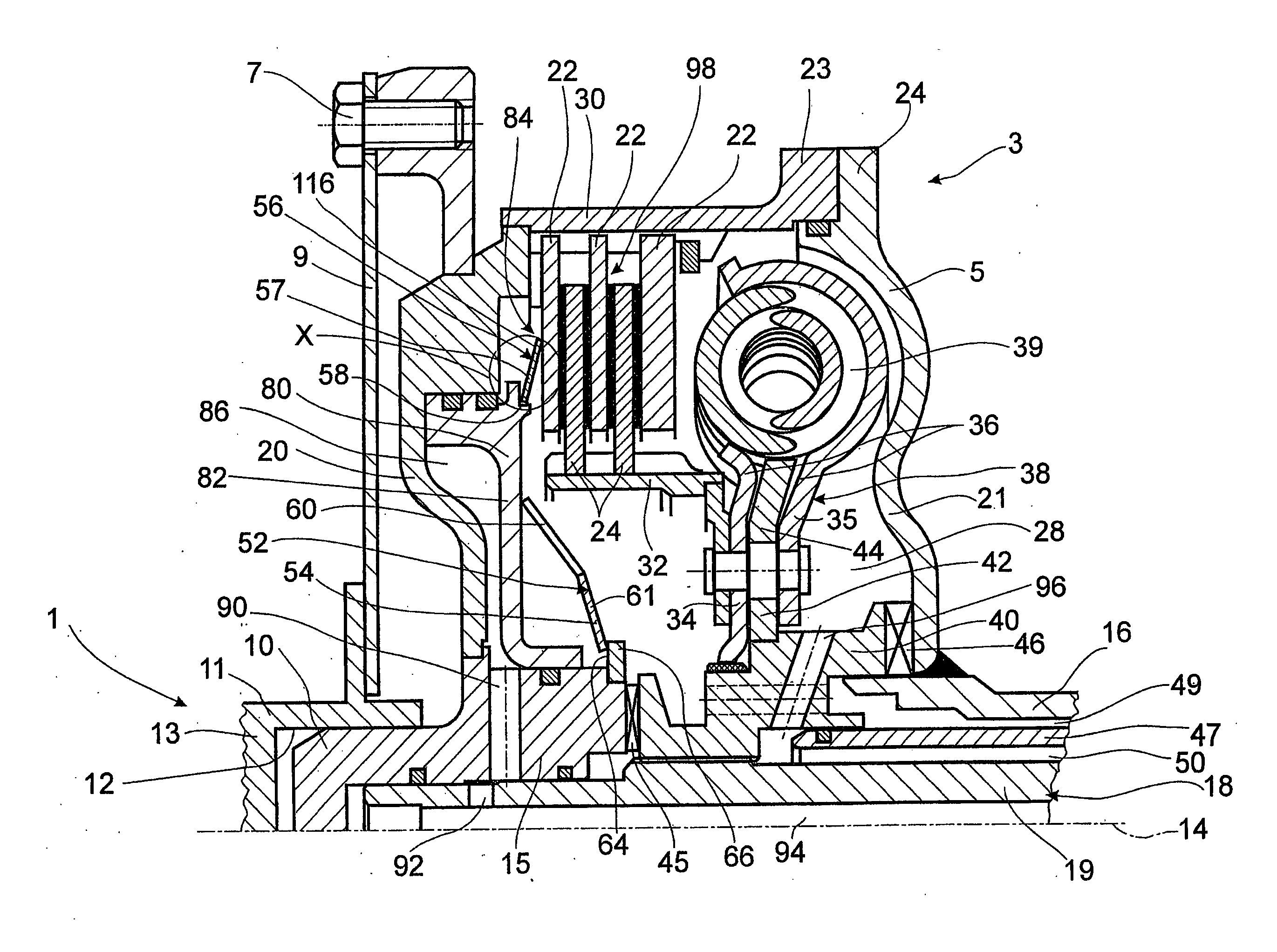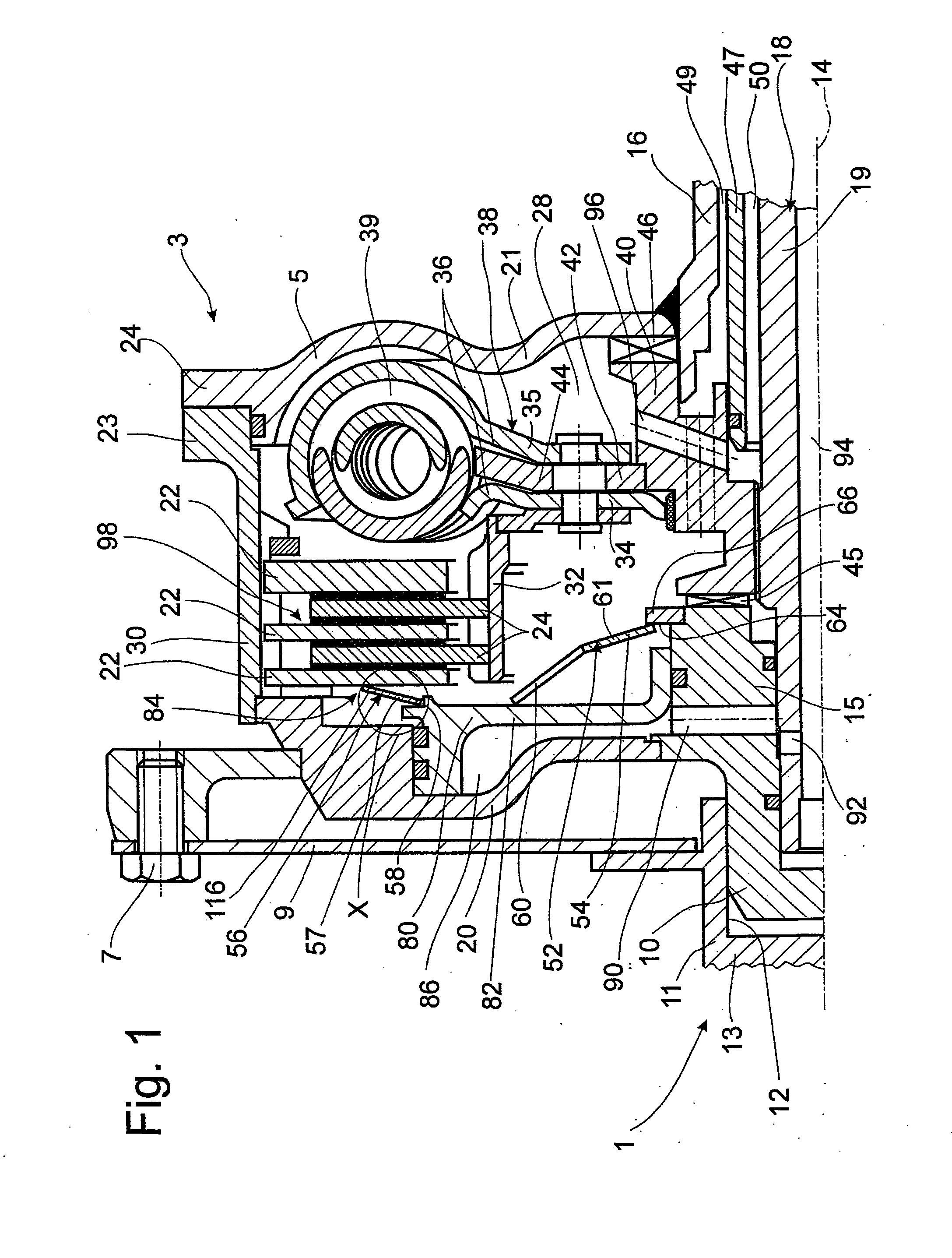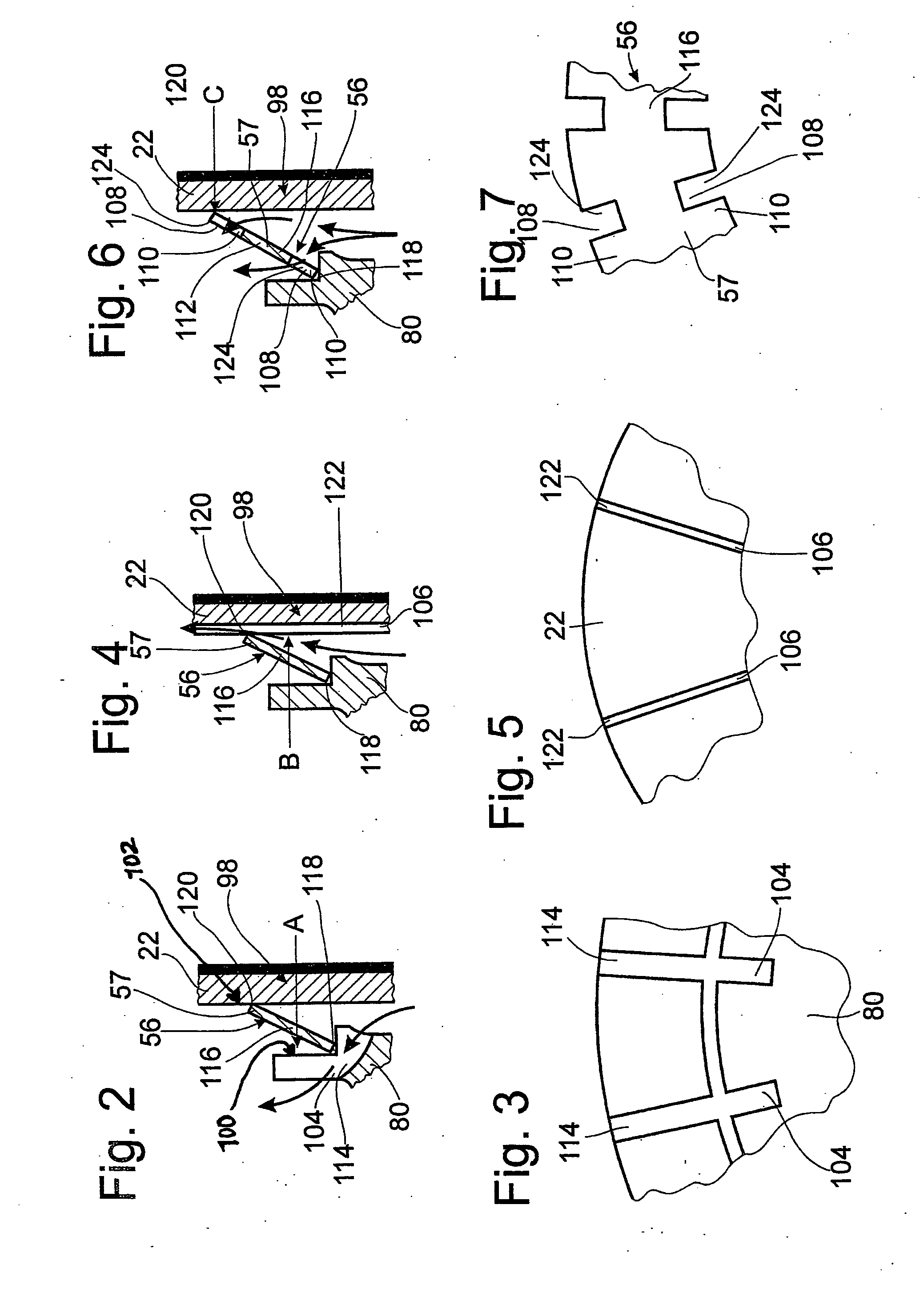Clutch device
a technology of clutch elements and friction surfaces, which is applied in the direction of fluid-actuated clutches, non-mechanical actuated clutches, clutches, etc., can solve the problems of disadvantageous effects on the degree of utilization of friction surfaces in their current state for torque transmission, relatively hard engagement process and jolts, etc., to avoid thermal problems of clutch elements, particular uniformity and softness, and exclude disadvantageous effects of tolerances and waviness
- Summary
- Abstract
- Description
- Claims
- Application Information
AI Technical Summary
Benefits of technology
Problems solved by technology
Method used
Image
Examples
Embodiment Construction
[0021]FIG. 1 shows a schematic diagram of a drive train 1 with a clutch device 3 of the present invention. The clutch device 3 comprises a housing 5, which can be connected for rotation together with a drive 11, such as the crankshaft 13 of an internal combustion engine, by means of a plurality of mounting elements 7 and a connecting element 9 such as a flexplate. In the area of an axis of rotation 14, the clutch device has a bearing journal 10 provided on a drive-side housing hub 15. The journal is mounted in a centering guide 12 formed on the drive 11. On the axial side facing away from the drive 11, the housing 5 has a takeoff-side housing hub 16, which is connected to, for example, a gearbox arrangement (not shown) and rotatably drives there a fluid-conveying pump (also not shown). A takeoff 18, the free end of which projects from the housing 5, is mounted concentrically with respect to the takeoff-side housing hub 16. This takeoff 18 can be formed by, for example, a gearbox inp...
PUM
 Login to View More
Login to View More Abstract
Description
Claims
Application Information
 Login to View More
Login to View More - R&D
- Intellectual Property
- Life Sciences
- Materials
- Tech Scout
- Unparalleled Data Quality
- Higher Quality Content
- 60% Fewer Hallucinations
Browse by: Latest US Patents, China's latest patents, Technical Efficacy Thesaurus, Application Domain, Technology Topic, Popular Technical Reports.
© 2025 PatSnap. All rights reserved.Legal|Privacy policy|Modern Slavery Act Transparency Statement|Sitemap|About US| Contact US: help@patsnap.com



